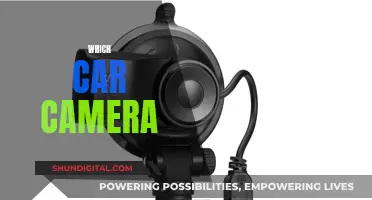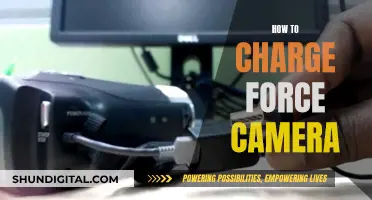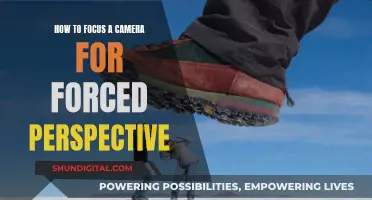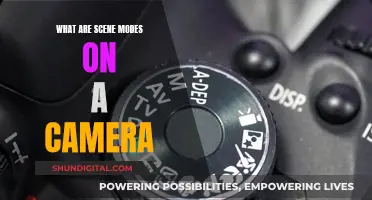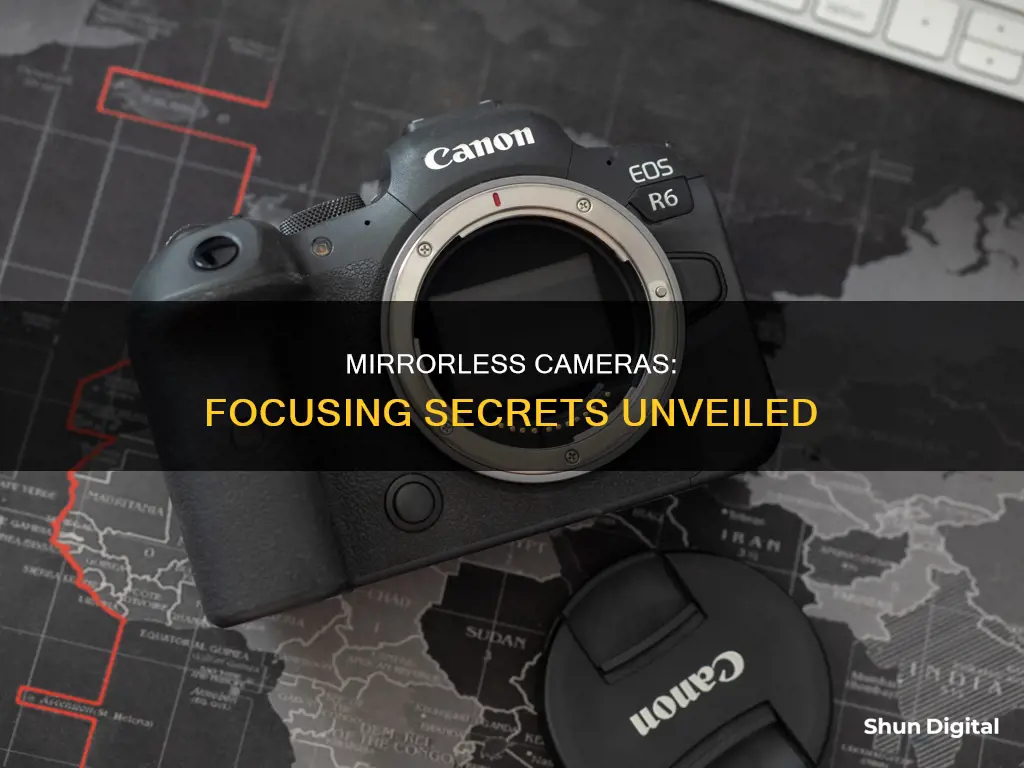
Focusing in mirrorless cameras is a topic of much discussion among photographers, with some arguing that the autofocus system in these cameras is inferior to that of digital SLRs. However, others maintain that mirrorless cameras offer more accurate focusing, especially for still subjects. This is because mirrorless cameras use a different autofocus system, known as contrast detect autofocus, which takes a reading from the sensor to adjust the lens until maximum contrast is achieved. This system is slower than the phase detection autofocus used in digital SLRs, but it is more accurate for still subjects. Additionally, mirrorless cameras have features like focus peaking and a depth-of-field scale that further enhance their focusing capabilities.
| Characteristics | Values |
|---|---|
| Focus on still subjects | More accurate |
| Focusing on moving subjects | Slower |
| Tracking of moving subjects | Less accurate |
| Focus on the background | Requires focusing on something in front of the subject |
| Autofocus micro-adjustment | Redundant |
| Autofocus for manual focus lenses | More helpful |
| Back-button autofocus | More useful |
What You'll Learn
- Mirrorless cameras use contrast detect autofocus, which is slower but more accurate for still subjects
- Phase detection autofocus is faster and better for tracking moving subjects, but less accurate
- Back-button autofocus is a useful feature for mirrorless cameras, especially for sports photography
- The focus and recompose technique is useful for shooting with a shallow depth of field
- Autofocus micro-adjustment is redundant with mirrorless cameras, but common with digital SLRs

Mirrorless cameras use contrast detect autofocus, which is slower but more accurate for still subjects
Mirrorless cameras use contrast-based autofocus systems, which are slower but more accurate for still subjects. This system works in a similar way to manual focusing: the camera adjusts the focus back and forth until the subject is in focus. This is done by evaluating the contrast in the scene and incrementally adjusting the lens until the point of highest contrast is found, indicating the sharpest focus.
Contrast-based autofocus is ideal for still subjects, as it can take time for the camera to focus on a moving subject. By the time the camera has focused, the subject may have already moved. However, it is highly accurate for stationary objects, as there is no need to calibrate the lens, and no mechanical focusing errors.
Phase detection autofocus, on the other hand, is faster and better for tracking moving subjects. It uses a second dedicated autofocus sensor to analyse light rays from different locations and quickly predicts how to adjust the lens for a sharp image. However, it may struggle in low light conditions and with fine details.
Some cameras use a hybrid of these two systems, combining the benefits of both. For example, a digital single-lens reflex (SLR) camera may use contrast detection autofocus in Live View or movie mode and phase detection autofocus when using the viewfinder.
In mirrorless cameras, front and back-focusing issues are rare because the focus system is on the sensor itself. However, focus shift can still occur, especially when shooting with larger apertures.
Unlocking the Free Camera Mode in Conan Exile
You may want to see also

Phase detection autofocus is faster and better for tracking moving subjects, but less accurate
Phase detection autofocus is a complex system that is much faster than other autofocus systems, making it ideal for capturing moving subjects. However, it is less accurate and more prone to errors.
Phase detection autofocus works by dividing incoming light into pairs of images and comparing them. This is achieved through the use of a secondary mirror that reflects a portion of light into a phase-detect sensor. This sensor then redirects the light to a group of sensors, which the camera analyses and compares. If the images do not look identical, the camera instructs the lens to make adjustments until perfect focus is achieved.
While phase detection autofocus is very fast, it requires high precision to function accurately. Even a slight deviation during manufacturing can result in autofocus issues. This is why many DSLR cameras with phase detection autofocus experience front focus and back focus issues.
Additionally, phase detection autofocus may struggle with low-contrast subjects or in low-light conditions. It also requires precise lens calibration; otherwise, it can cause autofocus to be off.
Overall, while phase detection autofocus is excellent for tracking moving subjects due to its speed, it is less accurate and more susceptible to errors compared to other autofocus systems.
Copying Camera Raw Selections: A Step-by-Step Guide
You may want to see also

Back-button autofocus is a useful feature for mirrorless cameras, especially for sports photography
Back-button autofocus (BBAF) is a technique that separates the autofocus function from the shutter release button, assigning it to another button—usually one on the back of the camera. This means that the camera's autofocus is only activated when you press the dedicated focus button. You can then take a photo by pressing the shutter button, without the camera trying to refocus.
BBAF has several advantages for photographers. It allows you to shoot in AI-Servo/Continuous Servo (AF-C) mode while also benefiting from One-Shot/Single Servo (AF-S) mode. This is useful when you need to quickly transition from shooting a stationary subject to one that is moving. It also makes it easier to lock focus, as you can focus on your subject with the rear button, recompose your shot, and then take as many pictures as you like without the camera trying to refocus each time you press the shutter button.
BBAF can also be beneficial for sports photography as it enables you to halt continuous Servo AF when something might interfere with a moving subject you're tracking, without requiring you to stop shooting. For example, if you're photographing an athlete and a referee walks between them and the camera, you can simply remove your thumb from the rear button to stop the camera from refocusing on the referee, and then immediately pick up your primary subject again by pressing the rear button once the obstruction has passed.
In addition, BBAF gives you instant manual focus control. As the camera's autofocus is only engaged when you press the dedicated focus button, you can take complete control of the manual focus without the camera overriding it when the shutter is released. This can be useful in situations where your subject is heavily obstructed by objects that prevent the autofocus system from being able to acquire focus.
While it offers many benefits, BBAF does have some drawbacks. It requires excellent coordination to operate fluidly and can be tiring, especially if your subject is always moving. It can also be more challenging to use in cold weather or other difficult shooting conditions when you may not be able to accurately judge how hard you are pressing the buttons.
Ohio Speedsters: Evading the Ticket Camera
You may want to see also

The focus and recompose technique is useful for shooting with a shallow depth of field
The focus and recompose technique is a shooting method that allows you to lock focus using the center focus point and move the camera for a better composition. This technique is useful for shooting with a shallow depth of field because it allows you to achieve sharp focus when the subject isn't centered without going through the focus point selector.
To use the focus and recompose technique, you first need to select a single focus point in your camera viewfinder, typically the center point. Then, you half-press the shutter button to lock focus. Finally, you physically move your camera left, right, up, or down to recompose for a better composition before fully pressing the shutter button to take the photo.
This technique is particularly useful when you want to follow basic composition rules, such as the rule of thirds, which recommends placing the subject off-center. Without using the focus and recompose technique, you might end up with a blurry subject since cameras, by default, focus on the center point.
While the focus and recompose technique is a great tool, it does have some limitations. One of the biggest issues is that it only works if the subject remains on the same focal plane. In other words, the subject needs to be moving parallel to the camera sensor, as that's the direction of the focal plane. Additionally, if the subject is moving too fast, you may not have enough time to recompose before they move out of reach.
Furthermore, when you recompose by panning the camera, the axis of the focal plane shifts and is no longer parallel with the sensor. This focus shift is more noticeable when using long lenses or wide apertures, which create a shallow depth of field. As a result, recomposing with a shallow depth of field may lead to soft focus in your images.
In conclusion, while the focus and recompose technique is a valuable tool for achieving sharp focus and improving composition, it should be used judiciously, especially when dealing with shallow depths of field.
A Year of Camera Tickets: How Many is Too Many?
You may want to see also

Autofocus micro-adjustment is redundant with mirrorless cameras, but common with digital SLRs
Autofocus micro-adjustment is a feature that allows photographers to fine-tune the focus of their camera to ensure accurate results. This process involves testing and calibrating the autofocus system by focusing on a ruler or scale to determine if any adjustments are needed. While this feature is common in digital SLRs, it is not necessary for mirrorless cameras.
Digital SLRs, or single-lens reflex cameras, use a system called phase detection autofocus to calculate the distance between the camera and the subject. This system involves deflecting light from the lens up to a mirror, which then reflects it into the viewfinder and a dedicated autofocus sensor. While phase detection autofocus is fast and effective at tracking moving subjects, it lacks accuracy.
The autofocus sensors in digital SLRs are typically made up of a combination of cross-type and single-line autofocus points. Cross-type autofocus points are the most accurate and should be used when precise focus is crucial. On the other hand, single-line autofocus points can result in inaccurate focus, especially when using wide apertures.
Even when using cross-type autofocus points, digital SLRs may still struggle with accurate focus due to calibration issues. The autofocus system relies on perfect harmony between the autofocus sensor, lens, and autofocus motors. Any misalignment, no matter how small, can affect the accuracy of the autofocus system.
To compensate for these inaccuracies, digital SLRs offer autofocus micro-adjustment. This feature allows photographers to test and calibrate their camera's autofocus system, ensuring that the focus is accurate. Autofocus micro-adjustment can usually be done in-camera or through a service centre.
On the other hand, mirrorless cameras do not require autofocus micro-adjustment. Mirrorless cameras do not have a dedicated autofocus sensor; instead, they utilise the image sensor for autofocus. This system, known as contrast detect autofocus, involves adjusting the lens until maximum contrast is achieved at the desired focal point.
Contrast detect autofocus is much more accurate than phase detection autofocus, especially for still subjects. Since the image sensor is used for autofocus, there is no need for calibration or micro-adjustments. This results in consistently sharp and focused images, even when using wide apertures.
In summary, autofocus micro-adjustment is a feature used in digital SLRs to compensate for the inherent inaccuracies of phase detection autofocus systems. However, mirrorless cameras utilise contrast detect autofocus, which does not require micro-adjustments, making this feature redundant. The absence of autofocus micro-adjustment in mirrorless cameras is not a drawback but rather a testament to the accuracy and reliability of their autofocus systems.
Washington State: Understanding Camera Ticket Payments
You may want to see also
Frequently asked questions
Mirrorless cameras have a different autofocus system than DSLRs. They use contrast detect autofocus, which is much more accurate for still subjects. The camera adjusts the lens until maximum contrast is achieved.
Back-button autofocus is a feature of most mid-range cameras and above. It allows the photographer to separate the camera's ability to focus from the shutter button, giving them more control over when the camera focuses.
Back-button autofocus is particularly useful when using the focus and recompose technique, as it allows the photographer to focus with a cross-type autofocus point, then recompose without losing focus. It is also useful for sports photography, as it allows for more precise control over focus points.



